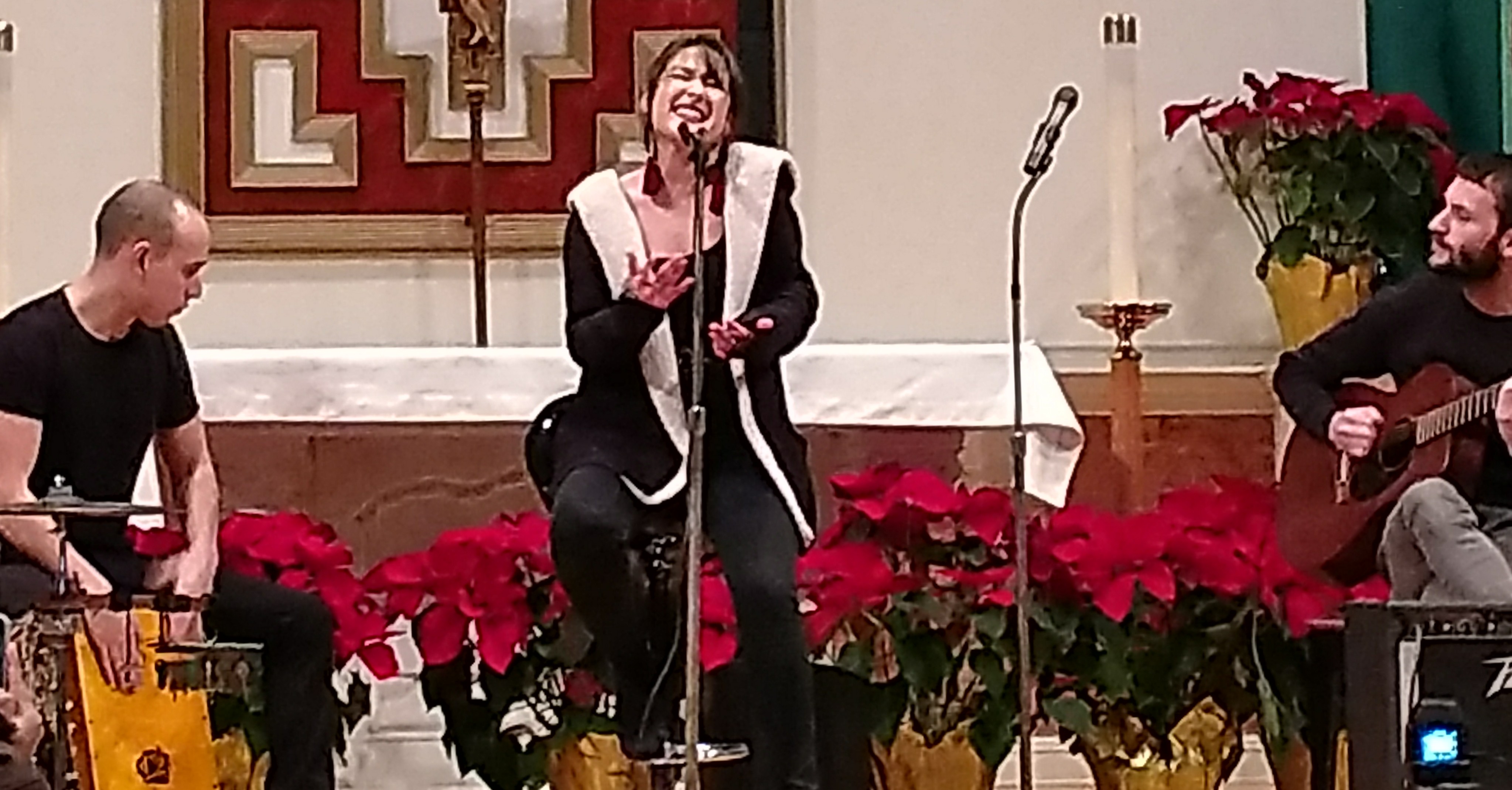Hearing the young Venezuelan singer Nella in real space for the first time felt like stumbling upon a new species. I wanted to collect specimens, come to understand it, preserve it. To the songs she sang from Spain and Venezuela she gave something familiar but utterly distinct, an Ibero-American sound completely her own, effuse with tradition, jazz, and contemporary pop.
The modulations of her voice are both astonishing and seamless, even within a solitary song. This comes not just from her vocal apparatus but from a thoroughly relaxed physical presence. Not a muscle betrays a hint of tension; and so the tensions and contrasts in the music and lyrics are allowed a rare sonic purity. She is at ease with the boldest effect, yet there is no holding back: it’s that limits are pushed and leapt over without visible strain.
She shifts beautifully between accompaniment and a capella and unites pure song with other sounds, silences, and vocalizations. She whistles, claps hands, whispers, opens her lungs, sings at the mike and apart from it, attends as in a second home to the acoustics of the space. When lyrics are simple or repeated, it is an opportunity to add complexity and depth – and, when she draws the audience into rounds and sing-alongs, height and width too.
Five of the songs were by the Spanish composer Javier Limón, her acknowledged mentor, including the self-referential Me llaman Nella – “They Call Me Nella” (her full name is Marinella Rojas). Strains of copla and flamenco are instantly apparent in El fin de fiesta, Cuatro estaciones, and her renditions of them. Ay amor, Me llamen Nell, and Volver are little more eclectic. Limón’s titles evoke other like-named songs, lyrical tocayos that provoke cultural (and perhaps musical?) associations.
If Limón’s compositions were tinged with Andalucía, the merengue La negra Atilia (Pablo Camacaro and Henry Martínez), Sentida canción (Martinez), and the famed Tonada de luna llena (Simón Díaz) are evocations of her country and Isla de Margarita where she was born. The songs open when she sings like wells of memory, inexhaustible, forever to drink from. One of her own was on the program, Tu amor es paz (“Your Love is Peace”), which says all in its title that she arouses in her vocals.
Paulo Stagnaro (percussion), Gilad Baratan (guitar), and special guest Edward Ramirez (cuatro) accompanied her sensitively and unobstrusively. Instrumentation was minimal and sometimes done altogether without, giving her voice full rein in the resonant architecture.
Nella is a summoner of emotions and a maker of memories; she makes you ache and smile and laugh too. It may one day seem ironic to have seen her first as part of a free concert series at the neighborhood St. Teresa Church in lower Manhattan. It had the makings of an “I saw her when” moment, a major talent lined up for takeoff.
She was preceded by an intriguing program of Chinese songs played and sung at the piano by the visiting Mandy Hong, interspersed with bits of history and commentary. They ranged from the 1940s to the present and included both the original and the 1952 Frankie Lane versions of “Rose, Rose, I Love You”, which she pointed out makes ingenious use of homophones in the English translation.
For more on Nella, visit her here. Some of the songs mentioned in this review can be listened to in the U-Lab White Sessions. Click on St. Teresa Church for future events at that venue. She will perform at Joe’s Pub in New York on May 29, 2018. For tickets and information click here.
